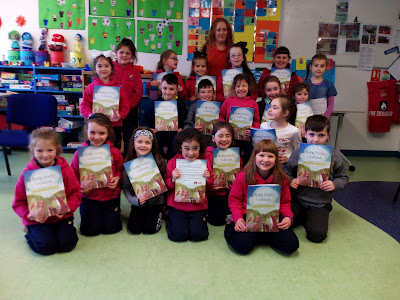 |
| Buddy Bench Programmes |
1. Getting in touch with the body
Although anxiety might start out as a negative thought or worry, it is always experienced in the body as a feeling. People who are over-anxious have agitated bodies – their hearts are beating faster, their breathing is quicker and they might experience symptoms such as sweaty palms or pains in their stomachs. As well as tackling the thinking that causes anxiety, an important way to overcome anxiety is to learn to manage the feelings of anxiety and, in particular, learning to relax the body.
Generally, a key feature of problematic anxiety is that the child is out of touch with their body. They are often living too much in their heads (which are full of anxiety-laden thoughts, ruminations and worries). Frequently, the goal is to help them “get out of their heads” and live more in their bodies; you want them to stop over-thinking and to start living. Sometimes, anxiety is caused by the mind misunderstanding the body’s basic signals as in the case of a panic attack. For example, an anxious teen might notice their heart breathing faster, causing them to worry that they are having a heart attack which, in turn, causes their heart to beat even faster and so the anxiety escalates.
2. Learning to relax in the face of anxiety
A key step in overcoming anxiety is becoming aware of how it impacts on your body and then learning ways to discharge those feelings in order to relax your agitated body which, in turn, relaxes your mind. In my clinical experience, different techniques work for different children and adults. For example, some children can readily use introverted activities such as becoming aware and slowing their breathing and others find extroverted activities easier such as using physical exercise to discharge their anxiety. As a result, you have to be patient to find out what works for your child. Below are some of the techniques that I have found most useful when working clinically with children, all of which need to be practised regularly if they are to work.
3. Encouraging body awareness
The first step is to help children become aware of exactly where and how they experience anxiety in their body. For example, a child anxious going to school might experience tummy pains (and interpret this as being sick and a reason to avoid school). It can be helpful to invite them to notice this as being caused by anxiety – “Sometimes, worries can cause us to feel a tummy pain.” I find it useful to make a body map with children, where you draw out or colour in the different parts of the body where they experience anxiety symptoms. This helps them tune into their body and not to be overwhelmed by the anxiety.
4. Physical exercise and relaxation
Doing something physical and then relaxing afterwards is an excellent method of dealing with anxiety. This might be as simple as going for a walk when you feel anxious, taking 10 minutes on the trampoline or doing 10 press-ups. More formally this could mean practising the evidence-based technique of progressive muscular relaxation (PMR) whereby you practise systemically tensing and then relaxing each part of your body. PMR is usually learned by listening to a audio guide (many of which are available on YouTube) that you could use with your child as part of their bedtime routine. In using physical exercise techniques, a key aspect is to get your child to focus on their body as they exercise and then to take time to relax afterwards.
5. Breathing and relaxation
A second major set of techniques that you can use to help children to relax, is encouraging them to become aware of their breathing. There are many different breathing techniques that you can use but simple ones such as counting slowly as you breathe can work well. For example you can invite your child to breathe in 1, 2, 3, 4, 5, relax 1, 2, 3, 4, 5 and then breathe out 1, 2, 3, 4, 5. The goal is to help children slow their breath (which reduces anxiety) and to attend to their body (which stops them attending to worrying thoughts).
6. Mindfulness and meditation
The practice of mindfulness and meditation provides many different tactics that you can teach children as a means of managing their anxiety. In simple terms, these techniques focus on helping children simply notice and accept what is happening in their bodies and environment without trying to change anything. Given the current popularity of mindfulness, there are literally hundreds of guides on how to teach children. Have a search online.
7. Positive visualisation
As anxious children often have great imaginations (unfortunately focused on negative things), a good technique can be to teach them to use positive visualisation as a means of relaxing. For example, as a ritual during the bedtime routine, you can listen to an audio clip with relaxing music that encourages a child to identify a happy memory or a safe relaxed place which they can practise recalling when anxious or as a means of aiding sleep. Learning the discipline of distracting your mind from negative and fruitless worries is a key tactic in managing anxiety.
Read More
We teach each of these element in our positive mental well being workshops for primary school children. To book us come to your school email us on hello@buddybench.ie or call (056) 7702027.

No comments:
Post a Comment